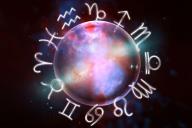The researchers studied how transforming data into musical sounds can enhance data interpretation and engagement.
They developed custom "data-to-music" algorithms that convert digital data into musical compositions.
By assigning specific data points to musical elements like pitch, rhythm, and timbre, they created a unique auditory representation of the data.
How they discovered it
The research team collected Finnish weather records as their dataset for experimentation.
They transformed the weather data into musical compositions, allowing listeners to experience the data in a new and immersive way.

The musical representations provided additional dimensions to the data, beyond the traditional visual and numerical formats.
The researchers found that the use of musical characteristics and structures helped in capturing and conveying patterns, trends, and anomalies within the data.
They discovered that specific musical elements contributed to engagement and understanding.
By manipulating these musical characteristics, they were able to highlight different aspects of the data and draw attention to specific patterns or changes.
Why it might be important
The potential applications of this research are significant.
For businesses that heavily rely on data analysis to meet consumer needs, understanding the most engaging musical characteristics can improve data interpretation and decision-making processes.
This research sets the foundation for further exploration of the "fourth dimension" of data interpretation through music.
It opens up possibilities for developing new tools, software, and techniques that can leverage the power of music to enhance data analysis and communication.
Ultimately, the goal is to create more engaging and intuitive ways to interact with data, allowing individuals to gain deeper insights and make more informed decisions.









